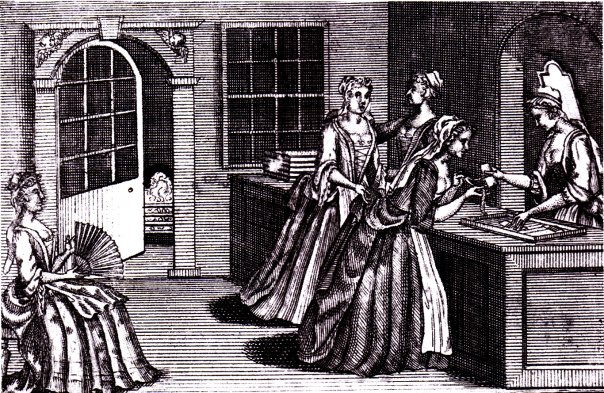159. An excellent Lip-Salve
Take an ounce of Myrrh, as much Litharge in fine powder, four ounces of Honey, two ounces of Bees-wax, and six ounces of Oil of Roses; mix them over slow fire. Those who are inclined may add a few drops of Oil of Rhodium, and some Leaf Gold (The Toilet of Flora, page 135)
An admirably clear recipe, with exact measurements for most of the ingredients. Let's take a closer look on those:
Myrrh A resin that have been in use since ancient times as perfume and incense but also for its medical proprieties. It is antiseptic and has a long standing tradition in various mouth remedies, like sores and cleaning teeth and gums. Melts tolerable well into vegetable oils. Is considered safe, but shouldn't be used the first 5 months of a pregnancy.
Litharge Lead pigment, in this case red.
Poisonous.
Honey Apart from it's sweet favour, honey also have healing properties and works both as an antiseptic and as antibacterial. It also softens skin and can be used in salves and creams. Safe, but small children should not eat it.
Bees-wax A natural wax produced by honey bees. Melts well into oils and is often used as base for creams. It isn't absorbed by the skin, but doesn't clog the pores and softens and protects. Safe.
Oil of Roses ie Rose oil. An essential oil extracted from rose peals. It is very labour intensive and the oil is therefore very expensive. Used in perfumes and other cosmetics and is considered safe.
Oil of Rhodium Has nothing to do with the chemical element. Rhodium oil is also known as Rosewood and comes from the Brazilian Rosewood. Used in perfumes but is also healing and antiseptic. It also have a slightly deodorising effect. Considered safe.
Note: A bit late it has come to my attention that Brazilian Rosewood is an endangered species, so my recommendation is to leave the salve unscented or add a few drops of another scented oil.
Leaf Gold Gold leafs are extremely thin sheets of gold that is used for gilding. Though an metal, gold is used in alternative medicine and is considered anti-inflammatory. Edible gold leaf can be found in well-sorted food stores
All the ingredients, if we disregard the Litharge, is quite safe to use and almost all have properties that makes them very suited for a lip salve. It doesn't seem to be very hard to make. The Litharge have to be substituted, of course and I plan to use Iron oxide instead. All the other ingredients are perfectly possible to attain, but I'm going to substitute the rose oil too. It's use in this recipe seems to be to provide oil and scent, and disregarding the scent, well, I think I could use and unscented oil instead. With the myrrh and the Rhodium oil I think that it will smell quite nicely anyway. I haven't decided on what kind of oil yet, but I have used almond and jojoba oil before and I think both would work well. As for gold leaf I happen to have edible gold dust in my cupboard already, so why not try it? I have all the ingredients I need except myrrh, but I know where to get it- hopefully I will have time to go there this week.
 Lady Altamont by George Romeny, 1788, Tate Colletion
Lady Altamont by George Romeny, 1788, Tate Colletion

























